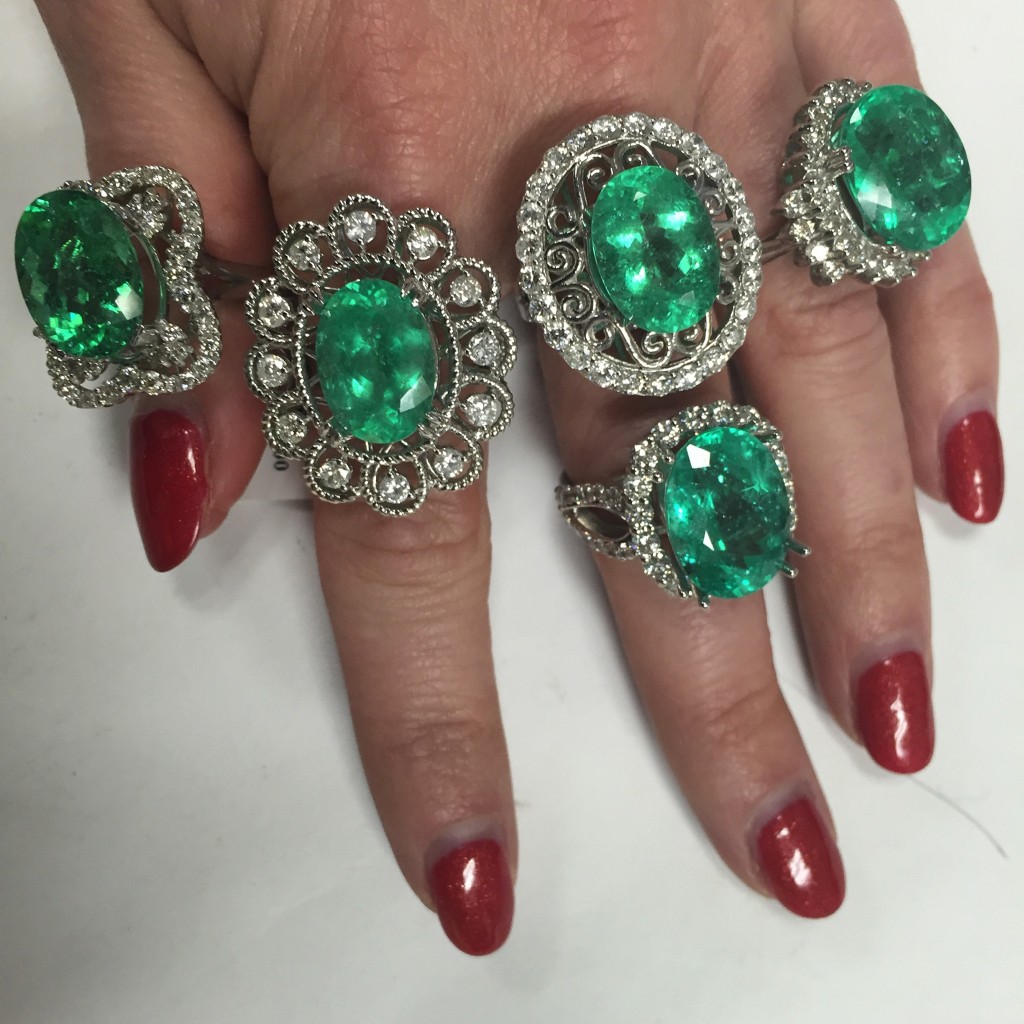
It’s easy to get jaded with the world we live in today. We’ve been up to the moon, down to the depths of the Mariana trench in the Pacific Ocean and satellites have mapped every part of the globe. It may sometimes seem like there’s nothing new left to discover – but any gemstone lover will tell you that occasionally great finds are still made that give the world something it has never seen before. This was the case with the sensational Paraiba tourmaline that burst out of Brazil in the late 1980s. Capturing the imagination of gemstone enthusiasts everywhere with its radiant glow and colors ranging from an astonishing blue-green to a superb turquoise it was soon commanding prices of up to $10 000 a carat!
The science
Tourmaline is the name used to describe a group of closely related mineral species. While all tourmalines have the same crystal structure they differ in terms of their chemical and physical properties. They all have the elements aluminum, boron and silicon but a complicated mix of other elements such as chromium, iron, manganese or vanadium is what gives each stone its particular color. The most common species of tourmaline is elbaite and tourmalines from almost every corner of the crayon box can be found among this species. Very occasionally elbaites contain copper and it from these stones that we get the spectacularly beautiful, incredibly rare, electric Paraiba tourmaline. So rare, in fact, that it is said that only one Brazilian Paraiba tourmaline is mined for every 10 000 diamonds!
A man with a plan
To make great discoveries you often have to make great sacrifices. Convinced that something ‘completely different’ lay beneath the hills of the Paraiba state in north-eastern Brazil, Heitor Dimas Barbarosa spent the best part of a decade digging in the region. Finally, in 1989, his faith and perseverance were rewarded with the discovery of tourmalines the like of which had never been seen before. Large concentrations of copper, along with some manganese serve to create stones that can vary from a rich emerald through to a mint green and from a turquoise through to a sapphire blue. Higher levels of manganese create purple and violet colors.
All good things come to an end…
Five years after they were first discovered the final tourmalines were taken from the Paraiba mines. The rarity of these fabulous stones pushed prices still higher creating record after record for the per carat price a tourmaline. Paraiba tourmalines created such a frenzy not just for the vivid intensity of their color, but also for their ‘fire’. Even under very little light these magnificent stones seem to glow with a strength that is often referred to as electric. Currently the most prized Paraiba tourmalines are those with a neon ‘swimming-pool’ blue hue.
The story continues
There was great excitement in the early 2000s when a new crop of vivid blue-green tourmalines appeared on the market, this time out of Nigeria. Shortly afterwards the east African island of Mozambique was the location of another find of these remarkable looking stones. These African stones had only minute chemical differences to their Brazilian counterparts and were much larger, often weighing over 5 carats, compared to the originals which are generally much smaller.
What’s in a name?
Back in Brazil neighboring states to Paraiba were also finding similar stones. By now there was a serious debate over the naming with some arguing that Paraiba should only refer to those stones mined from the original source with all others designated ‘Paraiba type’. However, in 2006 the impressively named Laboratory Manual Harmonization Committee decided that paraiba should be used as a varietal description and no longer as an indicator of geographic origin. Opinions still vary and it is not uncommon to find differences of opinion as to this new nomenclature in the gemstone world.
An electric choice!
At JupiterGem we have hand-selected some of the most spectacular paraiba tourmalines you could ask for. With colors ranging from mint-green to sky-blue we have something for everyone – all you need to do is to get in touch with one of our experts today. We will be thrilled to help you choose the paraiba tourmaline that is best for you. After all, everyone could do with a bit of electricity in their lives!


